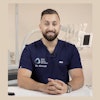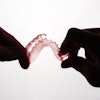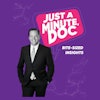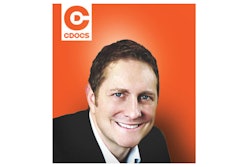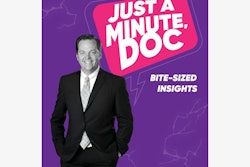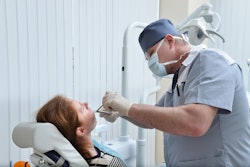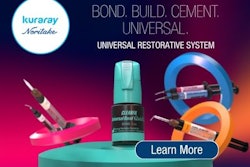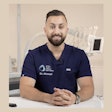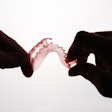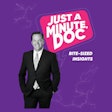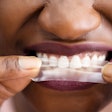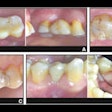During a recent visit to the headquarters of Dentsply Sirona in Charlotte, NC, I had the chance to sit down with Dr. Mark Montana, who is in private practice in Tempe, AZ, and specializes in fixed, removable, and implant prosthodontics.
I wanted to ask Montana five questions surrounding dental implants and their current and future state. You can find our wide-ranging interview below.
Kevin Henry: What are some of the most common mistakes or oversights you see among newer clinicians placing implants, and how can they be avoided?
 Dr. Mark Montana.
Dr. Mark Montana.
Dr. Montana: Well, I believe the first thing is to appreciate what we’re trying to do. In dentistry of the past, you always built on what was there. Implant dentistry is unique in that you’re creating a foundation.
I try to tell dentists and patients in general, when you do implant dentistry, you’re doing construction, and it all starts with the foundation. If you’re looking to save money, no one wants to save on the foundation when they want to build a house. Maybe you have a dream house. Maybe you have a simple house. You might want to decorate it with the most amazing stuff, but maybe you can’t afford to do that. That's OK. Save money. You change things out later, because that’s the disposable part of the equation.
A crown is a disposable part of an implant restoration, but the implant is not. With that, we try to start with the best implant, if possible.
There are different strata for pricing on implants, of course. Within that, a good consumer, which is the dentist and not the patient, should be looking at what is supported by data as a minimum criterion for selection.
If a new brand shows up and it’s a little cheaper than the last one, you think, "Well, what have you got on the history? Where are your studies?" They say, "We took our study and we based it on this other one." Well, maybe I should be looking at that other company because they invested in this study.
So foundation comes first. The second thing with any dentist -- young, experienced, or just new to implant dentistry -- is planning before you even do the foundation. If you don’t have a view of how it should finish, you really shouldn’t start. You wouldn’t build anything without some kind of a view.
It may be a single central or maybe a single bicuspid, but there are nuances to those teeth. Plan it first before you take the next step. Do your homework on the implant. Plan it well, and then call on the expertise of the people around you whom you trust on the things you don’t know.
Q: You mentioned the planning side of things. Is that where digital dentistry and implants intersect today, and how much can be realistically done on the digital side of the equation?
A: Digital is fantastic in that it does two things for us. One, it allows you to plan without expense. You can reproduce who the patient is and plan who you want the patient to be. Historically, that was a very slow, somewhat expensive, and arduous process. You must make an impression. You have to pour the impression. You have to trim the impression. You have other people involved with waxing, etc. In all that, there’s interpretation as the patient goes through a lot of steps in time.
The digital aspect allows you to get everything done in a visit painlessly, plus the patient is interested in how something new looks. Patients like to see their own teeth on a screen. It’s interesting to them. Then from that, you can immediately take the next step of planning, coordinating, etc.
If you want to place the implant, or if you don’t and someone else will place it, the sharing of information is pure. It’s not a bit of this and a bit of that that is lost. It’s pure.
Q: With that purity, do patients come in with expectations, and does digital dentistry help manage those expectations, or perhaps alter them from what the patient was initially envisioning?
A: Sure. The patients’ hope, which is sometimes their expectation, is they want their teeth back. They know an implant is how they’re going to get there, but they want minimal impact. They want to pretend nothing was ever lost and nothing was ever missing.
The digital part helps them with expectation, because you can show them on screen that this is what we must do. Notice you’re lacking some tissue here to get what you’re hoping for, so we’re going to have to make some corrections. We’re going to need some help here. We may have to do some grafting. It allows us to visualize the situation and moderate the expectation by graphically and visually explaining where the challenges lie.
Otherwise, if we just have a conversation and say, "You know, you’re missing some tissue." What is "some?" Now I can show you what "some" is. These two teeth on the other side of the mouth? That’s what it’s supposed to look like. They see that it’s no longer "some." It’s actually this, and that’s what we’re trying to achieve.
Q: With those patient expectations, how are patients today more accepting of same-day or faster implant options?
A: Patients are never going to want to go the other direction and go slower. One of the first things they’re going to ask you is, "How long is this going to take? How long am I going to be without what I want?"
Some patients have a traditional style of information, where in the old days you put in the implant and you don’t do anything for the longest time. They’re going to want faster, so we are doing everything we can to get there.
There are certain things we can’t change yet, like the biology, the way the body heals, the rate it heals, etc. However, we can minimize the steps to get there, and we can minimize the steps to complete it.
Patients are never going to want to go the other direction, and if we can shorten the time slightly, we’re always on the winning side of the equation.
Q: Looking into your crystal ball, what are you excited about over the next five years with what could come from dental implants?
A: The easy answer is AI (artificial intelligence), but that’s such a general answer that you can take that any direction you want.
In actual physical form, the two things I would love to see would be a different implant design. I don’t mean a wholesale change, but I’m thinking maybe a thread design that allows for increased stability without increasing stress to the bone.
I think that our thread technology has been borrowed from other works in human design and history, and we’ve applied it. Now, I think we’re getting into a stage where we’re looking at bone not being static. It’s going to change under a particular load, so the idea of just maybe a bigger, more aggressive screw sounded good once upon a time. However, the results weren’t so great. The bone didn’t like that.
We would like to be gentler on the bone and more passive. But on the other hand, we’re in a hurry. We want it to go in nice and tight, so I’m thinking that we’re going to see some improvement in the design of the threading.
The second thing, if we can get there, would be a surface that resists biofilm or colonization by bacteria. That’s challenging, because you want colonization by blood cells. You want bone to grow to the surface, so you can’t make it something that is inert, but at least at the top level of the implant. If there is some exposure of a surface that is resistant to colonization, I think we will probably get there.
The comments and observations expressed herein do not necessarily reflect the opinions of DrBicuspid.com, nor should they be construed as an endorsement or admonishment of any particular idea, vendor, or organization.
